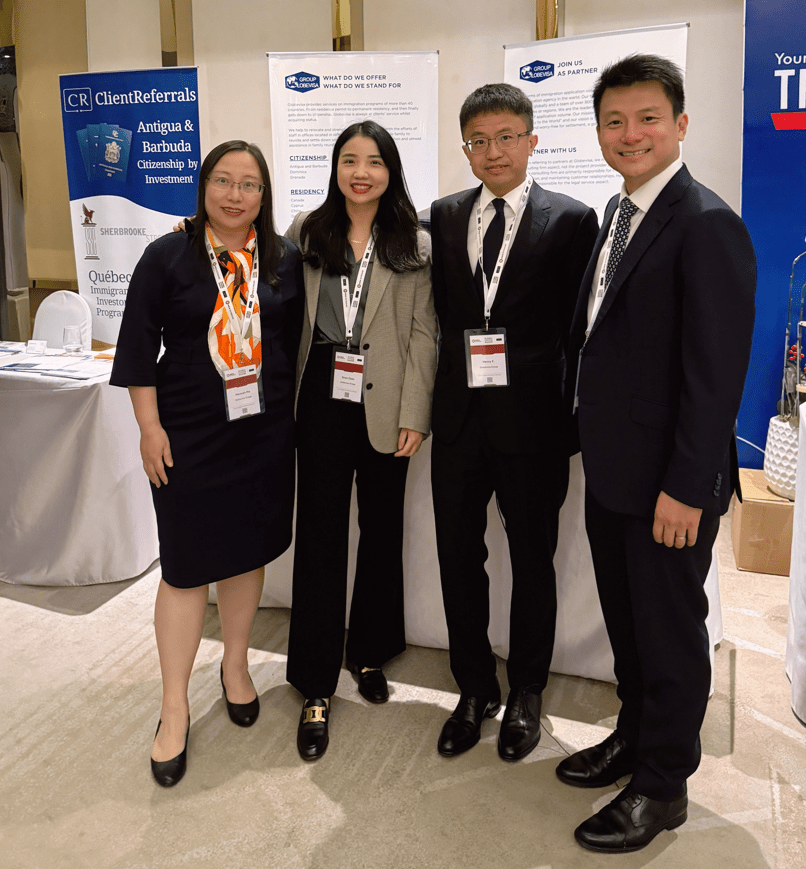Author: Siren Chen
Group Head of Project Research and Development of Globevisa Group
As the Special Administrative Region’s (SAR) Secretary for Financial Services and the Treasury, Mr. Hui Ching-yu claimed in the Secretary’s Blog, “Since the launch of the new Capital Investment Entrant Scheme (CIES) on 1 March, the Scheme has received a very positive response, with more than 600 inquiries received to date and applications submitted on the first day of the launch.”
In response to the soaring demand for cross-border services, Globevisa Group established a local team in Hong Kong back in 2013. High Net Worth Individuals (HNWIs) and their families arriving in Hong Kong often find themselves navigating unfamiliar territory, particularly in accessing the thriving capital market and fulfilling their investment obligations for investor visas. Newcomers faced challenges related to housing, medical care, and education for their children.
A decade has passed, and the new CIES comes back with an investment threshold of HKD 30 million (equivalent to USD 3.85 million), much friendlier compared to other mainstream investment visas. The next question arises: ‘In what products should investors choose to invest?’ In a highly volatile and competitive capital market like Hong Kong’s, opportunities abound alongside risks. Hong Kong operates under a territorial-based tax system, and there is no capital gains or estate duty tax. This provides a solid ground for general investors to put their investment with minimum costs accrued.
With reference to the Securities and Futures Commission (SFC) website, in the most conservative considerations, which means we only select products rated A or above in Hong Kong, an investor can make use of a strategy like this:
Out of a total investment of 30 million HKD, 3 million must be invested in government-designated innovative technology companies. Of the remaining 27 million HKD available for the investor’s discretion, 3 million is allocated to the most conservative Certificates of Deposit which generates a 4-5% p.a. The remaining 24 million is invested in bonds rated AA+ which also yields 4-5% p.a., or in high-quality corporate bonds rated A+ or above.
We believe that such investment products are essential to safeguarding investors’ assets and achieving the primary objective of obtaining Hong Kong residency.
However, since the Hong Kong government explicitly announced its intention to restart the Hong Kong Capital Investment Entrant Scheme last year, Globevisa’s Hong Kong Investment Immigration Research Team led by Siren Chen has been in communication and discussions with over 100 financial institutions in the market, including brokerage firms, asset management companies, banks, and fund companies. We aim to select the safest investments for our clients through a rigorous due diligence process. However, during this process, we have also identified some investment products with significant issues, such as:
- Financing model: Financing amounts range from HKD 4 to 6 million, with financial institutions claiming to contribute up to HKD 27 million to meet official investment requirements, effectively equating to making a donation in exchange for residency.
- Discount model: Only requiring 50% of the investment amount, or HKD 13.5 million, to purchase stocks designated by financial institutions, claiming to generate profits and recoup the principal after seven years.
- Full payment model: Requiring an investment of HKD 27 million, this model involves applicants pooling funds to purchase shell companies and become original shareholders. These companies are then purportedly converted from the GEM board to the main board, packaged, and listed for sale or acquisition by third parties, allegedly resulting in “high profits” but with high risk. Alternatively, investments may be made in currently undesirable stocks or corporate bonds, such as stocks facing delisting risks or bonds from bankrupt companies with poor credit ratings (C-level or below, or unrated).
- A special “internal purchase and external loan” model for mainland Chinese applicants, where funds do not need to leave the mainland. Applicants purchase mainland private equity fund products worth HKD 40-50 million, claiming a guaranteed annualized return of 5%. After completing the fund subscription in the mainland, financial institutions will contribute HKD 30 million in Hong Kong to meet official investment requirements, effectively leveraging mainland funds into the fund for immigration purposes in Hong Kong.
Mr. Ivan Yam, representative of Globevisa’s Hong Kong office, emphasized that this is ultimately a HKD 27 million investment for a seven-year period. It cannot be ruled out that the Hong Kong government may require verification of applicants’ investments during the process of converting to permanent residency or citizenship after seven years. Therefore, Globevisa advises applicants to choose investment institutions designated by the Hong Kong government, adhering to standardized and secure investment methods.
By navigating the investment landscape cautiously, investors can seize the opportunities offered by the new CIES while avoiding potential pitfalls, ensuring a secure path to Hong Kong residency.

Left to right: Hannah Ma, Siren Chen, Henry Fan and Ivan Yam






